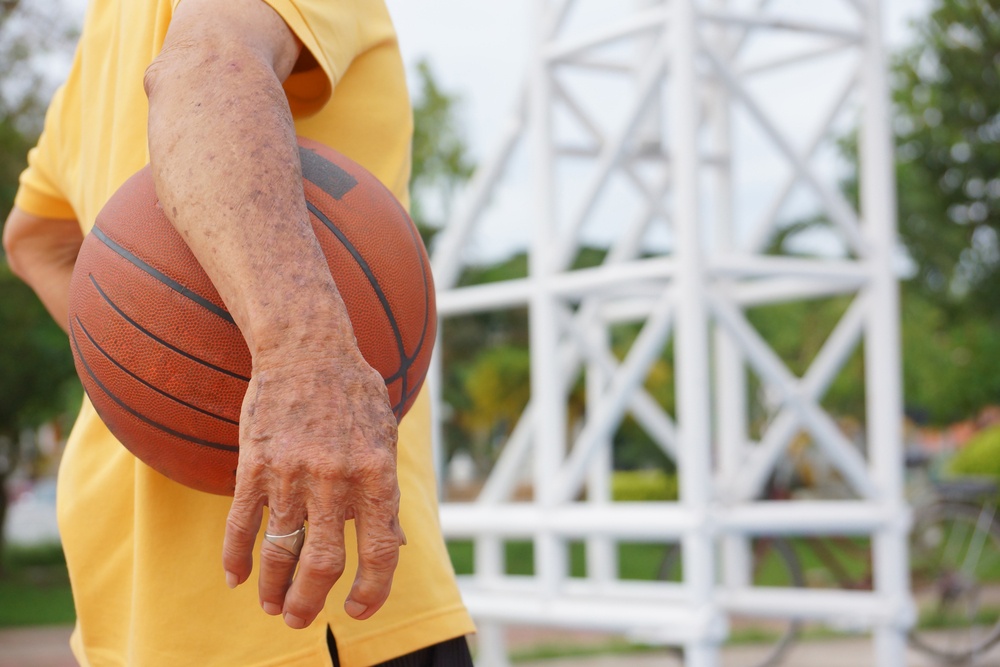There’s something special about the camaraderie and excitement of competitive sports that never seems to dull with time. Unfortunately, these activities can get harder as we age, for a simple reason: they push us to push our bodies to their limits (and sometimes beyond them).
As we age, our bodies lose the resiliency of youth, becoming more prone to fractures, torn muscles, spinal injuries, and arthritis. While regular exercise can certainly protect the body, the risk of injury remains no matter how careful we are — and it only increases with age, making it more challenging to continue enjoying the sports we’ve played for years.
As much as you love your sport, there will come a time when your body simply doesn’t bounce back like it used to, and minor aches and pains seem to linger for longer. If you’re currently struggling to play without pain or discomfort, rest assured: with the right approach to preparation and recovery, you can enjoy many more years of your favorite athletic activities.
KNOW YOURSELF
As you contemplate hanging it up, try to maintain a realistic view of what you want from your body and what your sport means to you. If a given sport is simply a convenient form of exercise rather than a beloved pastime, you might want to consider an alternative that’s easier on your joints, such as swimming or cycling, which most people can enjoy well into old age without sustaining significant injuries.
However, if the spirit of competition and sense of community you gain from your sport are what motivate you to stay active, keep at it. As long as you can enjoy your time on the field, court, or rink, there’s no reason to give up an activity that enriches you and keeps you fit.
COMMIT TO SAFETY, ON AND OFF THE FIELD
If you’d like to continue playing, it’s important to be realistic about what you can do and adjust accordingly. Take stock of how you’re feeling during gameplay: if you can’t jump without aggravating the ligaments in your knees, or bend over without straining the muscles in your back, you’ll need to acknowledge these limitations and adjust your style of play.
As soon as you’ve made peace with these limitations, you can start taking preemptive steps to preserve the longevity of your bones and joints. You can begin by visiting an orthopedic specialist, who can suggest some exercises to stretch and strengthen current weak areas and those that are most prone to injury down the road. Taking these conservative measures now may help you avoid the need for surgical intervention later, all while keeping you in game day shape.
A dedicated physical therapy regimen requires just as much passion and commitment as you give to your sport. Your therapist will guide you through exercises that can safeguard you from injury, but they aren’t one-and-done fixes, and they won’t be effective unless you put in consistent work. In short, you need to be as committed to treatment as you are to playing.
BE PROACTIVE ABOUT TREATMENT
If you’re suffering from a recent injury or a chronic condition, an orthopedic specialist can also diagnose the issue and help you cope with it. Fortunately, most of these problems can be effectively remedied with some simple conservative measures. Common sports-related issues such as sprains, for example, usually heal completely after a period of rest and gentle stretching. Similarly, more serious conditions such as arthritis, pinched nerves, and herniated discs can be effectively treated with a comprehensive physical therapy program, anti-inflammatory medications, and, if necessary, steroidal injections.
In some cases, of course, your joints might be so worn with use that they need to be surgically repaired. Fortunately, many sports injuries can be treated with arthroscopic surgery, a minimally invasive procedure that’s designed to shorten recovery timelines and minimize the risk of surgical complications. Indeed, many patients can still resume playing at a high level even after knee replacement surgery and other orthopedic procedures.
There may come a time when you simply don’t have the stamina or strength to keep up with the athletic activity you enjoyed when you were younger — but the best way to prolong your time on the field is simply to keep playing. As long as you’re enjoying your sport of choice, there’s no reason to hang it up just yet.




